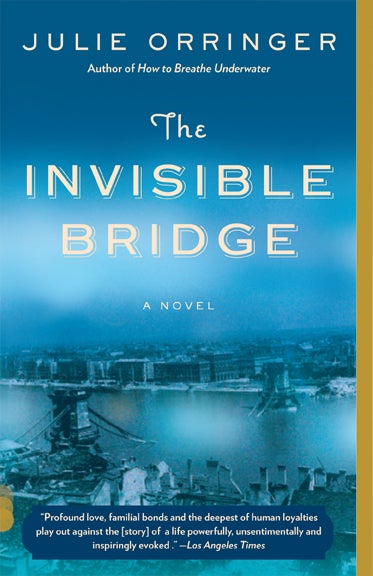Julie Orringer on Her Inspiration for The Invisible Bridge
Ten years ago, a few weeks before I went to Paris for the first time, my grandfather told me he’d lived in that city for two years when he was a young man. That was the first I’d heard of it. He told me he’d been accepted to architecture school on a scholarship in 1937, but had to quit when the war began. Because he was Jewish, and a Hungarian citizen, he was conscripted into the Hungarian labor service and lost his student visa.
Before that moment I’d never known he’d trained to be an architect. He’d been a window dresser for Sears Roebuck and Co. for thirty years: that was what I knew of his professional life. His war experience was even more patchy and abstract in my mind: he’d been in and out of forced labor camps, I knew, but I’d heard nothing about what he’d experienced and witnessed there.
Over the weeks and months that followed, he and I began to talk about that time of his life—how he’d won the scholarship; what it had been like for him, a Jewish boy from rural Hungary, to move to Paris; how he’d survived there; what he’d studied; where he’d lived; who his friends were; why he’d had to leave. Then I started asking about what had happened during the war. Those questions gave rise to a cascade of stories, events that no one in our family had ever spoken of—what his time in forced labor had been like, how his relationship with my grandmother had developed during his furloughs, how his own brothers had been conscripted, imprisoned, and killed. As I listened, it occurred to me that few Americans knew the fate of the Hungarian Jews during the war—Hungary wasn’t occupied by Germany until spring of 1944, its Jewish population left mainly intact until the Final Solution had become such an efficient machine that it did away with more than half of Hungary’s Jews in a matter of months.
As we talked, a narrative began to take shape in my mind—not one that followed my grandfather’s experience exactly, but one that began in 1937 with a young Hungarian Jewish man and a scholarship to architecture school in Paris, and that extended through the war years. I knew the story had the shape and scope of a novel. I had imagined I might always be a short-story writer, but this was a tale that demanded telling.
Click here to read the rest of the interview.







